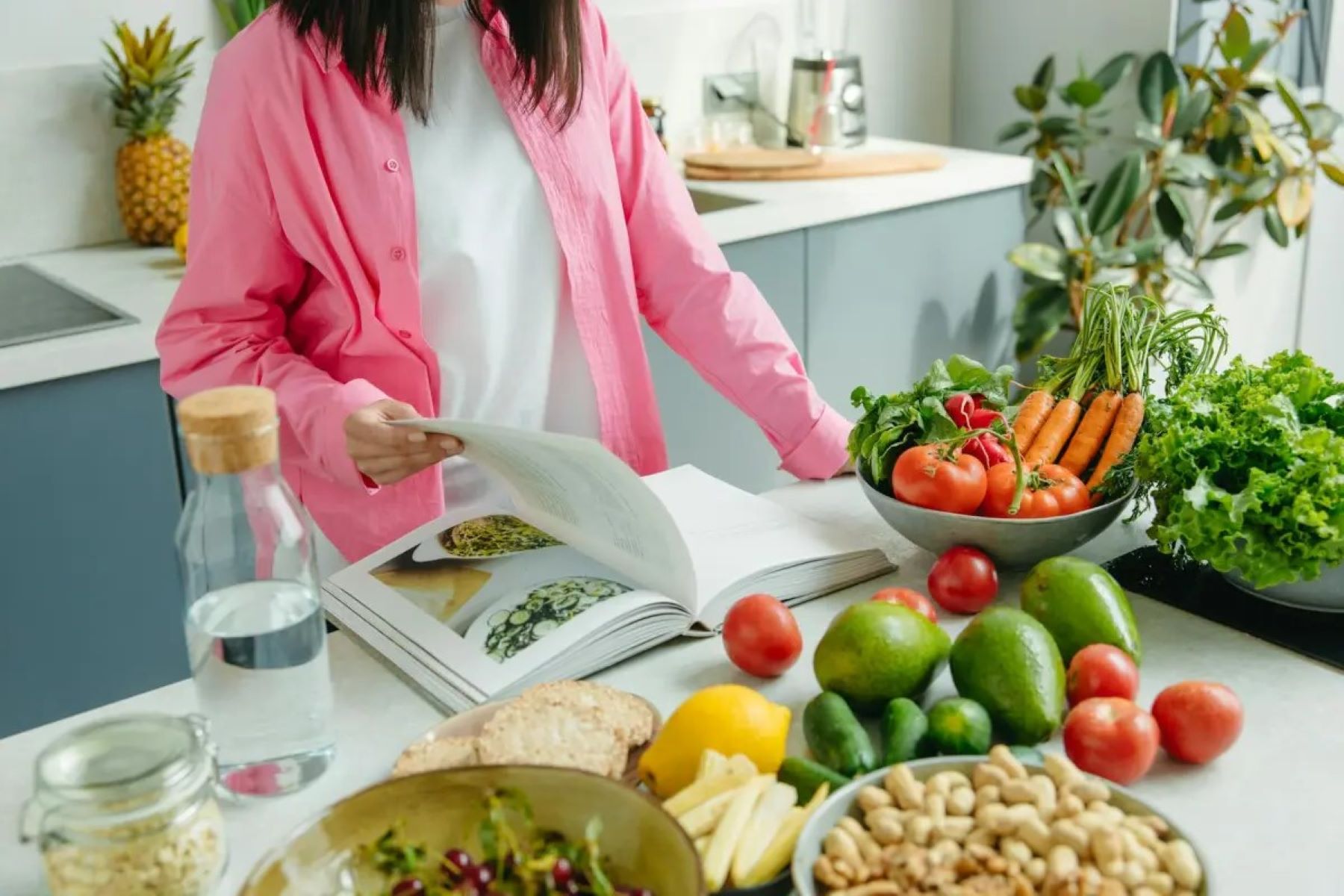Home>Kitchen & Cooking>Cookware & Bakeware>How To Organize A Recipe Book


Cookware & Bakeware
How To Organize A Recipe Book
Modified: March 19, 2024
Learn how to organize your cookware and bakeware in a recipe book with our expert tips and tricks. Streamline your kitchen and cooking experience today!
(Many of the links in this article redirect to a specific reviewed product. Your purchase of these products through affiliate links helps to generate commission for Storables.com, at no extra cost. Learn more)
Introduction
Are you tired of rummaging through a messy pile of recipe cards and torn-out magazine pages every time you want to cook a meal? Organizing your recipes into a neat and accessible recipe book can save you time and make cooking more enjoyable. In this article, we will guide you through the process of creating your own recipe book, from choosing the right format to adding personal touches. Whether you're a seasoned chef or a novice cook, having a well-organized recipe book can be a game-changer in your kitchen. Let's dive in and get started on this fun and practical DIY project!
Key Takeaways:
- Create a personalized recipe book by choosing the right format, sorting recipes by meal type and occasion, and adding personal touches like handwritten notes and family recipes.
- Protect and maintain your recipe book by using protective covers, choosing a convenient storage location, regularly updating and expanding your collection, and backing up digital copies for longevity and usability.
Read more: How To Organize Kids Books
Choosing the Right Format
When it comes to organizing your recipe book, the first step is to choose the right format. There are various options to consider, and the choice ultimately depends on your personal preference and cooking habits. Here are some popular formats to consider:
-
Traditional Binder: A three-ring binder allows you to easily add, remove, and rearrange recipes. You can use dividers to separate different categories, such as appetizers, main courses, desserts, and more.
-
Recipe Card Box: If you prefer a more compact and portable option, a recipe card box might be the perfect fit. You can organize your recipes on individual cards and categorize them using tabbed dividers.
-
Digital Recipe Book: For tech-savvy cooks, creating a digital recipe book offers the convenience of accessing recipes from various devices. You can use software or apps specifically designed for recipe organization.
-
Handwritten Journal: If you enjoy the personal touch of handwritten recipes, consider using a blank journal or notebook to compile your favorite dishes. This format allows for creativity and customization.
Consider your cooking style, storage preferences, and whether you prefer a tangible or digital format. Once you've chosen the right format, you're ready to move on to the next step in creating your organized recipe book.
Sorting and Categorizing Recipes
Sorting and categorizing your recipes is a crucial step in creating an organized recipe book. This process not only makes it easier to locate specific recipes but also helps you identify patterns in your cooking preferences. Here's how to effectively sort and categorize your recipes:
-
By Meal Type: Start by categorizing your recipes based on meal types, such as breakfast, lunch, dinner, and snacks. This will help you quickly find recipes suitable for a specific time of day.
-
By Cuisine: Organize your recipes according to different cuisines, such as Italian, Mexican, Asian, or Mediterranean. This categorization can help you satisfy specific cravings and explore diverse flavors.
-
By Dietary Restrictions: If you or your family members have dietary restrictions or preferences, create categories for vegetarian, gluten-free, dairy-free, or low-carb recipes. This ensures that you can easily find suitable options when planning meals.
-
By Ingredients: Consider creating categories based on key ingredients, such as chicken, seafood, pasta, or vegetarian protein sources. This approach can be particularly helpful when you have specific ingredients on hand and need recipe inspiration.
-
By Occasion: For special occasions and holidays, create categories for festive recipes. Whether it's Thanksgiving, Christmas, or a birthday celebration, having these recipes grouped together can simplify your menu planning.
By sorting and categorizing your recipes in a thoughtful manner, you'll be able to navigate your recipe book with ease and efficiency. This approach also allows you to tailor your cooking to suit various preferences and occasions, making meal planning a more enjoyable experience.
Use dividers to separate different sections of your recipe book, such as appetizers, main dishes, and desserts. This will make it easier to find specific recipes when you need them.
Adding Personal Touches
Once you have sorted and categorized your recipes, it's time to add personal touches to your recipe book. Personalizing your recipe book not only makes it unique to you but also adds a special charm to the overall organization. Here are some creative ways to infuse your personality into your recipe book:
-
Handwritten Notes: Consider adding handwritten notes or anecdotes alongside your recipes. Share personal stories, cooking tips, or memories associated with each dish. This not only adds a personal touch but also creates a legacy of culinary experiences.
-
Family Recipes: If you have treasured family recipes passed down through generations, incorporate them into your recipe book. Include the names of family members associated with each recipe to honor their culinary contributions.
-
Photographs: Adding photographs of the prepared dishes can bring your recipe book to life. Include images of the finished meals or the cooking process to visually enhance your collection of recipes.
-
Decorative Elements: Get creative with decorative elements such as stickers, washi tape, or hand-drawn illustrations. Adding embellishments can make your recipe book visually appealing and reflect your unique style.
-
Recipe Variations: If you often customize recipes to suit your taste, include these variations in your recipe book. Note down the modifications you make and how they elevate the dish to make it your own.
-
Cooking Quotes: Sprinkle inspirational cooking quotes or food-related sayings throughout your recipe book. These quotes can serve as delightful reminders of your passion for cooking.
By incorporating these personal touches, you can transform your recipe book into a reflection of your culinary journey and create a meaningful keepsake that goes beyond a mere collection of recipes.
Storing and Maintaining the Recipe Book
Now that you've put effort into creating your organized recipe book, it's essential to focus on storing and maintaining it to ensure longevity and usability. Proper storage and maintenance practices will keep your recipes safe and accessible for years to come. Here's how to store and maintain your recipe book effectively:
-
Protective Covers: Consider using protective covers for your recipe book, especially if it's a physical format. Transparent plastic covers or sleeves can shield your pages from spills, splatters, and general wear and tear. This simple measure can significantly extend the life of your recipe book.
-
Storage Location: Choose a designated and convenient location for your recipe book. Whether it's a kitchen shelf, a drawer, or a specific spot on your countertop, keeping your recipe book in a consistent location will make it easier to find when you need it.
-
Regular Cleaning: If you opt for a physical recipe book, regular cleaning is essential. Dust and food particles can accumulate over time, so gently wipe the cover and pages with a soft, dry cloth to keep them clean. For digital recipe books, ensure that your digital storage devices are regularly maintained and backed up to prevent data loss.
-
Update and Expand: As you discover new recipes or modify existing ones, make it a habit to update your recipe book. Whether it's adding new pages, inserting additional recipe cards, or updating your digital collection, keeping your recipe book current ensures that it remains a valuable resource.
-
Backup Digital Copies: If you maintain a digital recipe book, consider backing up your files regularly. Whether it's using cloud storage, external hard drives, or online platforms, having backup copies safeguards your recipes against potential data loss or device malfunctions.
-
Labeling and Organization: If you have multiple recipe books or collections, labeling and organizing them can streamline your recipe retrieval process. Clearly label each book or digital folder based on its content, such as "Main Dishes," "Baking Recipes," or "Family Favorites."
-
Preserving Handwritten Recipes: If you have handwritten recipes in your collection, consider preserving them by using acid-free paper and archival-quality storage materials. This can prevent deterioration and preserve the authenticity of these cherished recipes.
By implementing these storage and maintenance practices, you can ensure that your recipe book remains a valuable and enduring resource in your culinary endeavors. Whether it's a physical binder, a digital compilation, or a cherished handwritten journal, maintaining your recipe book will enhance its usability and preserve your culinary legacy.
Frequently Asked Questions about How To Organize A Recipe Book
Was this page helpful?
At Storables.com, we guarantee accurate and reliable information. Our content, validated by Expert Board Contributors, is crafted following stringent Editorial Policies. We're committed to providing you with well-researched, expert-backed insights for all your informational needs.
















0 thoughts on “How To Organize A Recipe Book”